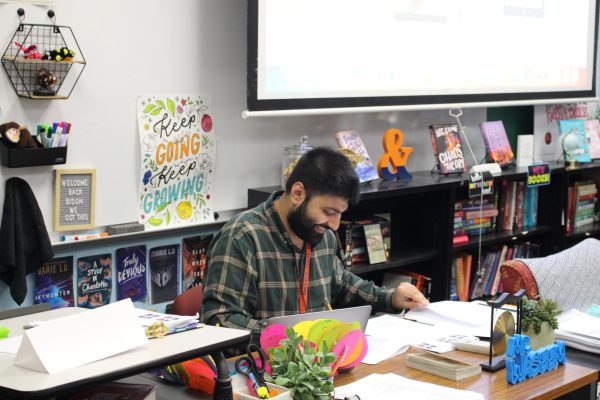Engaging in world language outside of class expands cultural knowledge and opportunities
Beyond the learning that occurs behind a desk with reading tests and stimulated dialogues in a world language class, learning outside the classroom can help enrich a student’s educational experience. It can show them real-life applications of theories that they are learning at school.
As a way to facilitate the engagement of the target language outside the classroom, Spanish teacher Danielle Ossman has implemented a verbal audio assignment, called an “escuchario.” This requires students to watch a television show or listen to an authentic spanish radio for at least an hour every week. Students are then required to record a verbal diary in Spanish of what they have seen or heard. This assessment is new this year, but has been formulated around previous listening activities integrated into the Spanish curriculum.
“I knew that I wanted to include this assignment into the curriculum because I have gotten positive student feedback from it already,” Ossman said. “Former AP Spanish students have told me that they have found listening activities fun and engaging.”
According to Ossman, after listening to the first round of verbal diaries from her students, listening scores have increased and students seem to have more energy and enthusiasm when discussing what they saw.
World language clubs at BG such as Spanish club and German club are an alternative way to develop an interest in the language and the culture surrounding it.
“At Spanish Club, particularly, we actually don’t focus on the language aspect at all, but we just celebrate the energy and fun of Hispanic culture,” Finkelshteyn said. “That facilitates just as much, if not more, growth as cramming for a five question vocab test.”
For Spanish Honor Society, along with German Honor Society and French Honor Society, there is a requirement of cultural hours that can also encourage exposure to the target language outside the classroom. Students can watch a movie, attend an event and just learn how to interact with another culture. For example, students had the opportunity to attend the Pops Concert called “¡Celebración Cultural Hispana!” on Nov. 2 which featured a Mariachi band and music from the Hispanic culture.
“Through this requirement, I hope that students can realize what opportunities are available to them,” Spanish teacher Sarah Manos said. “In the classroom, it’s a little bubble of language, but outside the class, you get to use the language in real-life scenarios.”
According to Ossman, although BG is fortunate to have native speakers, some students are afraid to put themselves out there and speak their target language in a real world setting.
Since we live in a predominantly English-speaking society, it can be difficult to maintain a level of immersion outside of class, especially when students are more likely to immediately switch back to English after the bell rings.
“Somebody learning a language might feel anxious going to an event with many fluent speakers, but that’s how you learn best,” Manos said. “Students should understand that it’s ok to make mistakes when speaking because they can still be understood.”
Listening to music in other languages is also an easy way that can engage students in their target language. According to Finkelshteyn, when “Despacito” by Luis Fonsi and ft. Daddy Yankee was first released, everyone knew it meant “slowly.” Just by adding a Spanish song or two to a playlist and listening to it a few times could further expand student exposure to the language.
Knowing a foreign language can help students to be open-minded about other people’s cultures and allow them to discover other traditions, travel opportunities, foods, friends and even job opportunities. Students are encouraged to find out about cultural events in the area or find a community center and volunteer in order to facilitate more exposure to the target language. Clubs like LASO offer volunteer events at BG, such as the Pops Concert volunteering and so does Interact club.
“At the end of the day, find a topic you like and look for tv shows, movies or audios associated with that interest,” Ossman said. “Watch something you’re interested in and use it in the target language for what you want to say. That can be the easiest yet simplest way to facilitate exposure to the target language outside of the classroom.”









